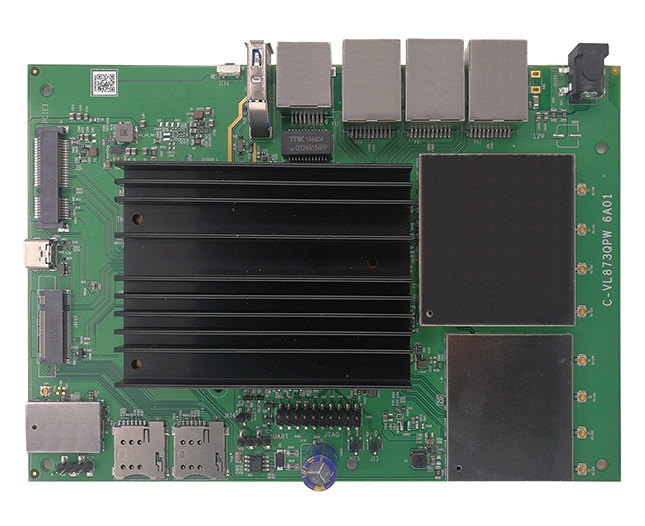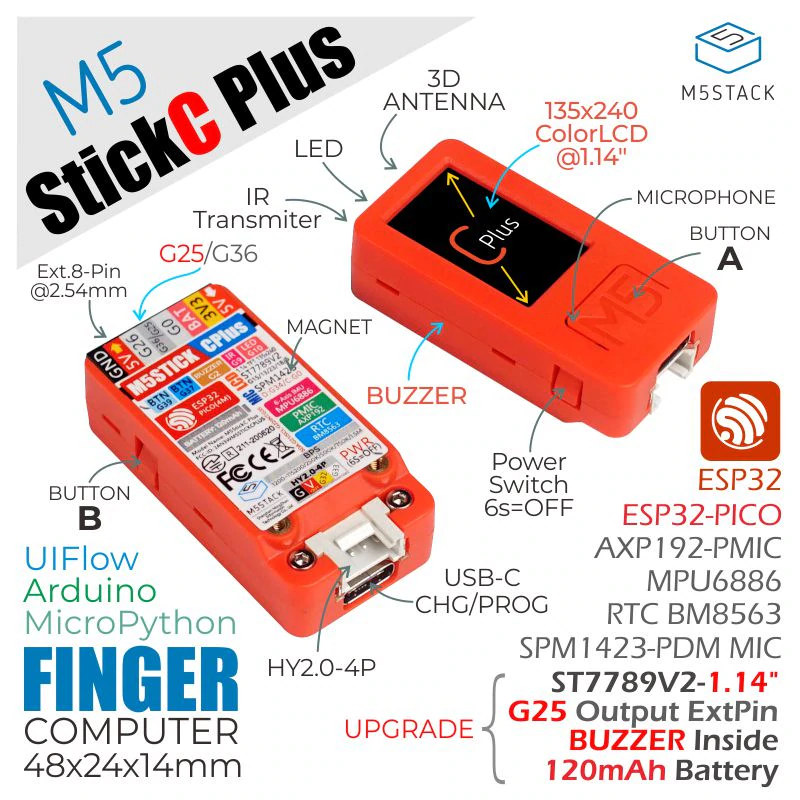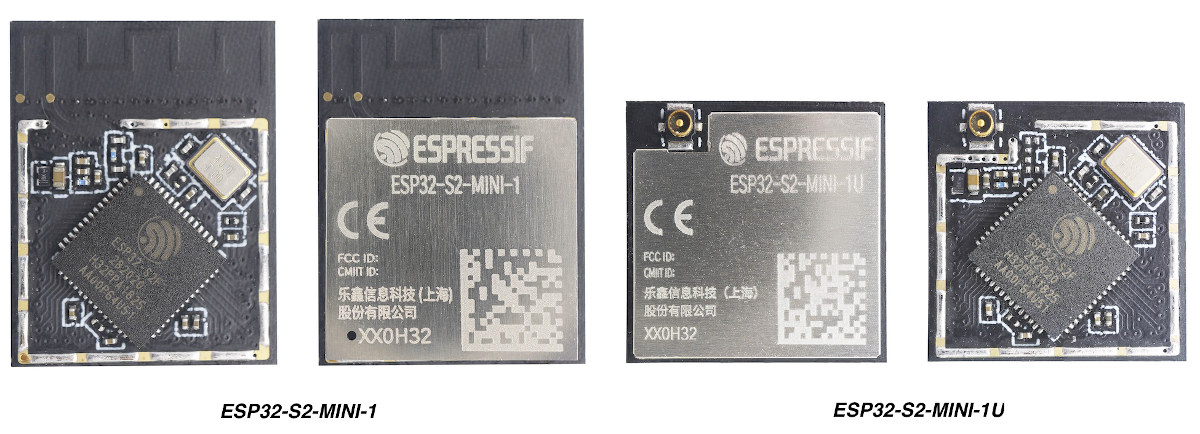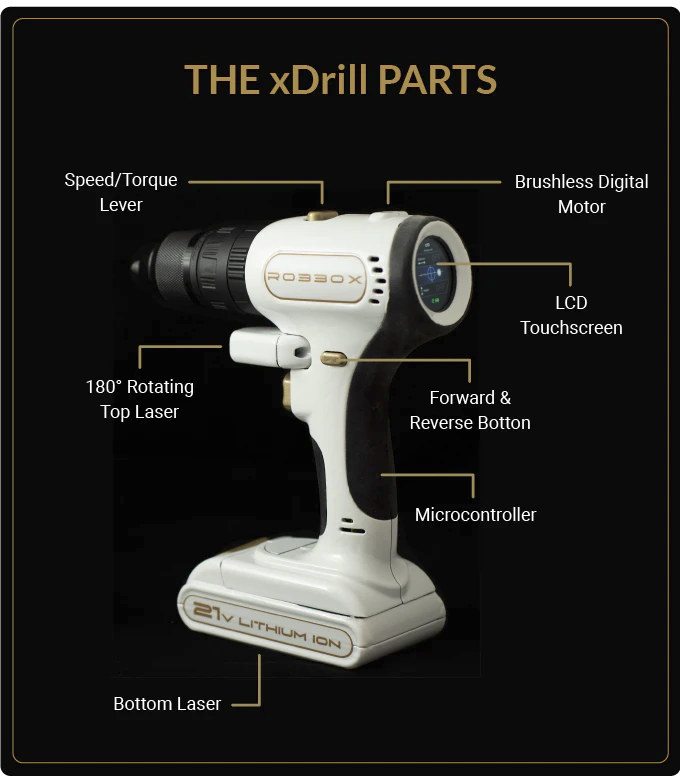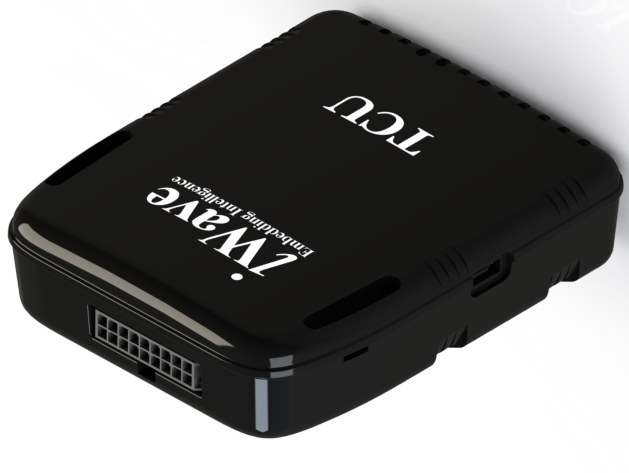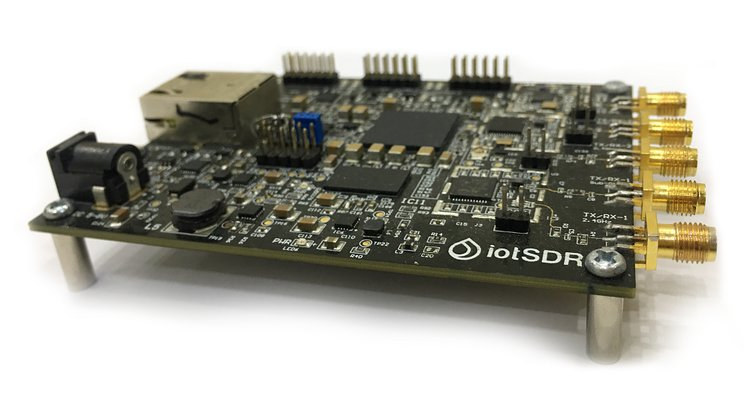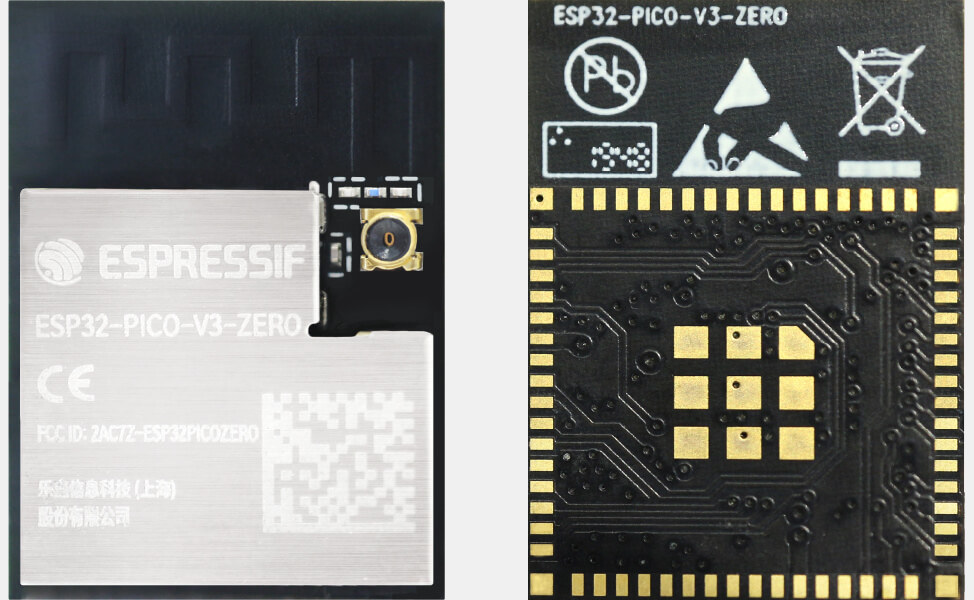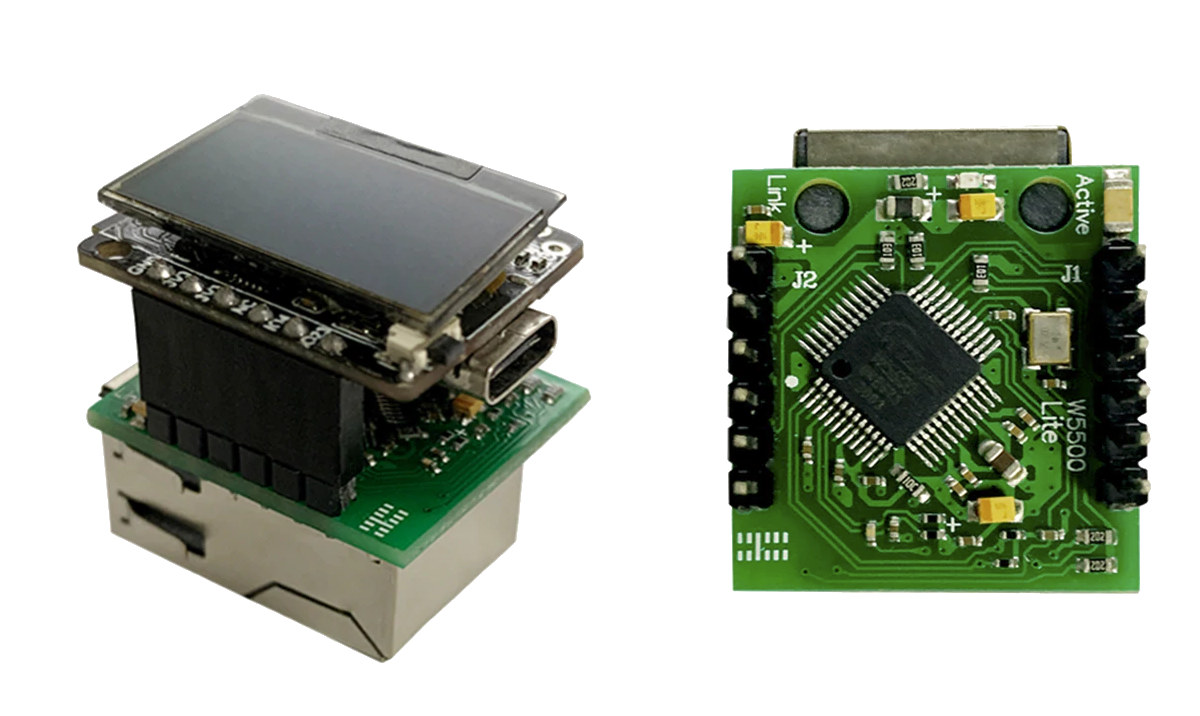We very recently wrote about DR6018 V2 Embedded WiFi 6 router board powered by Qualcomm IPQ6010 quad-core Cortex-A53 processor @ 1.8 GHz and supporting optional WiFi 6E and 5G IoT M.2 cards. If you are after a solution that supports WiFi 6 (802.11ax) and 5G, but with a bit more processing power and faster WiFi 6 speeds, Compex WPQ873 wireless embedded SBC may be an interesting option thanks to Qualcomm IPQ8072A quad-core Cortex-A53 processor clocked at up to 2.2 GHz, with integrated support for WiFi 6 up to 2475Mbps, and an M.2 socket for an optional 5G card. Compex WPQ873 specifications: SoC – Qualcomm Atheros IPQ8072A quad-core ARM 64 bit A53 @2.2GHz part of Qualcomm Networking Pro 600 Platform System Memory – 1x 512MB, DDR4 16-bit interface Storage – 256MB NAND flash, 8MB NOR flash Networking and Wireless Connectivity Ethernet 3x Gigabit Ethernet (RJ45) ports 1x 2.5 Gbps Ethernet port […]
M5StickC PLUS ESP32-PICO Devkit Comes with 1.14-inch LCD, 120 mAh Battery and Buzzer
Shortly after introducing the Core2 ESP32 IoT Development Kit with a 2-inch touch display, 390 mAh battery earlier this week, M5Stack has announced the availability of another ESP32 WiFi & Bluetooth IoT devkit, with the more compact M5StickC PLUS featuring a 1.14-inch display, a 120mAh battery, motion, sensor, a buzzer and the usual Grove connector for expansion. M5StickC PLUS is an upgrade to the original M5StickC that lacks the buzzer and features a smaller 0.96-inch display and a lower capacity 96 mAh battery. The new model can be purchased now for $13.95 plus shipping on Aliexpress, while the original device, that happens to be M5Stack top-selling product, is still available for $9.95. M5StickC PLUS key features and specifications: SiP – Espressif Systems ESP32-PICO-D4 system-in-package with ESP32 dual-core WiFI and Bluetooth IoT processor @ up to 240 MHz, 4MB SPI flash Display – 1.14-inch Color TFT LCD with 135×240 resolution (ST7789v2 […]
Espressif Unveils ESP32-S2-MINI Modules, ESP32-S3 and ESP32-C3 SoC’s Coming Soon
Espressif Systems has unveiled two new ESP32-S2 WiFi modules part of the new MINI series modules, namely ESP32-S2-MINI-1U with IPEX antenna, and ESP32-S2-MINI-1 with a PCB antenna. The press release also mentions upcoming ESP32-S3 and ESP32-C3 processors with few details. Let’s have a look. ESP32-S2-MINI modules Preliminary specifications: SoC – Espressif ESP32-S2FH4 single-core 32-bit LX7 microcontroller @ up to 240 MHz, RISC-V ultra-low-power co-processor, 320 kB SRAM, 128kB ROM, 2.4 GHz WiFi 4 connectivity, 4MB flash Antenna ESP32-S2-MINI-1 – PCB antenna ESP32-S2-MINI-1U – IPEX antenna connector Dimensions ESP32-S2-MINI-1 – 20 x 15.4 x mm ESP32-S2-MINI-1U – 15.4 x 15.4 x mm The company states the exact processor SKU used in the module is ESP32-S2FH4, but initially I could not find out it differed from ESP32-S2 since it has the same specs include a single-core processor, ULP core, up to 43 GPIOs, and USB-OTG support. It turns out the flash appears […]
xDrill Smart Power Drill Supports Intelligent Speed/Torque, Laser Measuring, Digital Leveling (Crowdfunding)
Many home appliances now have smart functions, and in my cases, I fail to see the added value, and I’m not sure why I’d want/need a connected refrigerator with a touchscreen display. So when I first saw somebody make a “smart” power drill with a small touchscreen display I laughed. But after having a closer look, Robbox xDrill smart power drill could actually be a very useful device saving you time and helping work better. The touchscreen is used for settings but also serves as a level tool to make sure the drill is aligned horizontally or at the angle of your choice, and you can also set the drilling depth. There are also two lasers that measure distances, so you don’t need to use a measuring tape and pencil anymore. xDrill key features and specifications: Built-in microcontroller with WiFi and Bluetooth connectivity (is that an ESP32 inside?) Display – […]
iWave Telematics Control Unit Supports GPS, 4G LTE, WiFi, and Bluetooth
We’ve often written about iWave Systems’ single board computers, development kits, and systems-on-module, but the company has also been offering automotive products such as a Linux based OBD-II Dongle. And they’ve just introduced a new one called Telematics Control Unit (TCU) based on an Arm Cortex-A7 processor and offering GPS, 4G LTE Cat 4/1/M1, WiFi 5, and Bluetooth 5.0 connectivity for vehicle fleet management and insurance companies that want to know how drivers behave… iWave Telematics Control Unit (TCU iW-G26) specifications: Processor – Arm Cortex-A7 based CPU @ 792MHz (likely NXP i.MX 7ULP) System Memory – 256MB DDR3L SDRAM Storage – 4GB eMMC Flash Connectivity 4G LTE Cat 4, Cat 1, Cat M1 (eMTC) 802.11b/g/n Wi-Fi 4 or 802.11b/g/n/ac Wi-Fi 5 (Hotspot & Station mode) Bluetooth 5.0 GNSS – GPS/A-GPS receiver with antenna Sensors – 3-axis accelerometer, 3-axis gyroscope, 3-axis magnetometer OBD Features & Protocols 12V Power Input from TCU […]
IoTSDR Linux Board Targets the Development of IoT Gateways with Standard or Custom IoT Protocols (Crowdfunding)
Xilinx Zynq-7010/-7020 powered iotSDR board by EmbedINN enables the development of IoT gateways with support for LoRa, SigFox, WeightLess, Bluetooth, BLE, 802.15.4, ZigBee, as well as custom IoT protocols. The board also supports GPS, Galileo, Beidou, and GLONASS navigation systems thanks to a Maxim Integrated MAX2769 GNSS chip. iotSDR key hardware features and specifications: SoC (one or the other) Xilinx Zynq-Z7010 (XC7Z010-1CLG400C) dual-core Arm Cortex-A9 processor with 256 kb on-chip memory, FPGA fabric with 28,000 logic cells, 17,600 LUTs, 2.1 Mb block RAM, 80 DSP slices Xilinx Zynq-Z7020 (XC7Z020-1CLG400C) dual-core ARM Cortex-A9 processor with 256 kb on-chip memory, FPGA fabric with 85,000 logic cells, 53,200 LUTs, 4.9 Mb block RAM, 220 DSP slices System Memory – 512 MB DDR3 Storage 128 Mbit QSPI flash memory for firmware Microchip AT24MAC602 SPI EEPROM for RF transceiver MCU firmware and data Radios “IoT” Radios RF Transceivers – 2x Microchip/Atmel AT86RF215 European band – […]
Espressif and Amazon Introduce ESP32-PICO-V3-ZERO Alexa Connect Kit Module
Espressif Systems & Amazon have recently announced ESP32-PICO-V3-ZERO Alexa Connect Kit (ACK) module providing out-of-box connectivity to ACK cloud services, support for features such as Alexa control, “Frustration-Free Setup” and Amazon Dash replenishment for connected devices. The tiny (23 x 16 x 2.3mm) module is based on the company’s ESP32-PICO-V3 System-in-Package (SiP) based on ESP32-V3 dual-core Xtensa LX6 WiFI and Bluetooth SoC, a 4 MB SPI flash, a crystal oscillator, filter capacitors, and an RF matching network. The module supports 2.4 GHz 802.11 b/g/n WiFi, Bluetooth, and Bluetooth Low Energy connectivity and comes with a PCB antenna and a u.FL connector to plug in an external antenna [Update: That should be an RF test connector instead, see comments]. ESP32-PICO-V3-ZERO module interfaces to a host MCU through a UART interface, and to speed-up time-to-market the module comes pre-certified for regulatory certifications such as FCC, CE, SRRC, IC, and RCM. The module […]
TTGO T-Lite W5500 ESP32 WiFi & Bluetooth Board Comes with OLED Display, Optional Ethernet Add-on Board
If you like tiny boards with Ethernet, TTGO T-Lite W5500 development board may be an interesting option, as the ESP32 board comes with a built-in OLED, and female headers to connect an Ethernet add-on board called W5500 Gateway Module. LilyGO TTGO T-Lite W5500 specifications: SoC – Espressif System ESP32 dual-core WiFi and Bluetooth SoC with 520KB SRAM Storage – 4MB flash Display – 0.96-inch OLED display (SSD1306 driver) Connectivity 802.11 b/g/n WiFi 4 up to 150 Mbps, and Bluetooth 5.x BR/LE via ESP32 SoC, on-board ceramic antenna or external antenna (selectable with a resistor?) Optional Ethernet via SPI Ethernet board based on Wiznet W5500 USB – 1x USB Type-C port for power and programming via CP2104 USB to TTL chip I/Os 8+6 through holes with GPIOs, SPI, ADC, Touch, 5V, 3.3V, GND Operating voltage – 2.7V-3.6V Misc – Boot & Reset button, 40MHz crystal oscillator Power Supply – 5V/1A via […]


